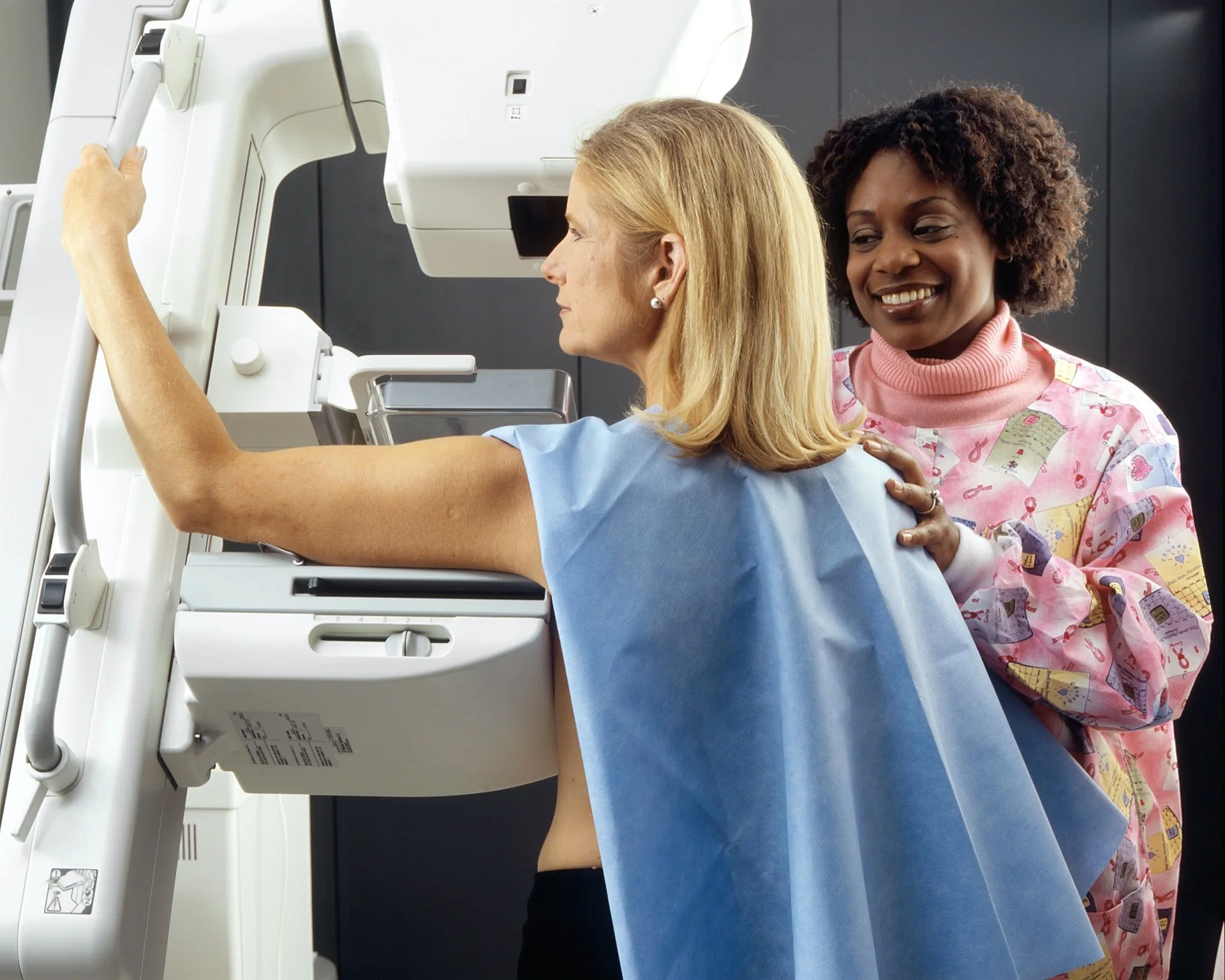Breast cancer is the most common female cancer in the world(1). However, in countries with access to first-rate healthcare, there has been a rapid decline in breast cancer mortality.
In countries where mammography is common-place, only 1 in 10 women diagnosed with the disease will die from it. This is when it is combined with treatment. In countries with no access to screening, around 5 to 6 out of 10 women will die of it. Mammography saves lives.
With early detection and effective treatment, breast cancer can be transformed. It can go from a dreaded disease that kills so many women to a disease that can be managed successfully.
So, what do you need to know about mammography?
Once a lump can be felt in your breast, the disease has already been present for about 5 years. But in the majority of cases, malignancy could have been picked up with mammography before the lump could be felt.
Physical examination, on its own, decreases the rate of breast cancer mortality. Regular self-breast examinations, thermography, and other alternative methods do not have the capability of detecting breast cancer in the early, crucial stages, as a mammogram does.
Walking in as a healthy woman and potentially being diagnosed with cancer can trigger anxiety. Plus, there is often concern about the procedure itself, especially for women who have not experienced a mammogram before.
Getting a mammogram
So while it may be difficult, it is important to try to relax as much as possible. During a mammogram, the breast tissue is spread out and compressed between plates.
This is necessary to get the detail needed, and tension can make it difficult for the radiographers to position the breast accurately. While a well-performed mammogram may be uncomfortable for a few moments, it should not be painful.
These days, full-field digital mammography is available in South Africa. As with other digital advancements, film and chemical development are replaced by electronic detector panels, computers, and software. The process is similar to taking a picture with your digital camera. Unlike film mammograms, the images can be manipulated digitally to change elements such as contrast levels, brightness, and colors. You can also enlarge parts of the picture, making detection easier. Digital images can also be subjected to computer-assisted detection. This is where a computer marks suspicious areas and alerts the doctor to potential trouble spots.
Digital mammography has been shown to improve cancer detection in all women below age 50 and premenopausal women (2). In addition to quality, the radiation dosage in digital mammography is about that of conventional mammograms. Also, the examination time is much faster. Moreover, it’s better for the environment as chemicals are not used in the development process.
What are some common concerns around mammograms?
We sometimes get asked whether breast compression can cause breast cancer. Breasts are extremely resistant to even major trauma and the compression during mammography doesn’t affect the breast tissue at all. It’s essential that the breast is compressed to get an effective image. This means breast tissue has to be spread out to allow breast structures to be seen. Compression also means that the X-ray dose required can be reduced.
Some women are also concerned that mammograms are exceedingly painful. This should not be the case. Women with very sensitive breasts may experience only slight discomfort provided the mammogram is performed properly. In cases where the breasts are painful before the mammogram, the pain should be treated first.
Breast care best practice
Good management of your breast health is related to age, as older women are at greater risk.

Age 20-39:
- Learn your family history of breast cancer
- Schedule a clinical breast examination with a healthcare professional every 3 years
- Conduct self-breast examinations monthly
Age 40 and over:
- Schedule an annual mammogram
- Arrange for an annual clinical breast examination by a healthcare professional
- Conduct self-breast examinations monthly
The bottom line
It is important to empower yourself with knowledge about the latest advances in breast treatments and technologies. Early detection of breast cancer is crucial to long-term survival. It’s best to practice good breast health and keep up with the latest technological advances. Doing so can help you detect abnormalities in your breasts before they become life-threatening.






![women [longevity live]](https://longevitylive.com/wp-content/uploads/2020/01/photo-of-women-walking-down-the-street-1116984-100x100.jpg)









